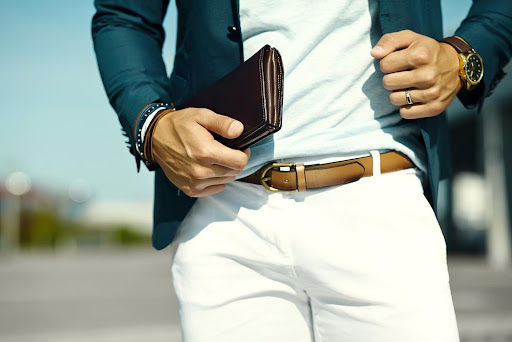In recent years, the fashion industry has witnessed a transformative shift toward inclusivity, driven by changing social attitudes and a growing demand for clothing that transcends traditional gender norms. At the forefront of this movement is the rise of gender-neutral blank apparel, a trend that champions inclusivity, comfort, and self-expression. This article explores the evolution of unisex clothing, the impact of blank apparel on inclusive fashion, and why this trend is here to stay.
Understanding the Rise of Gender-Neutral Fashion
Fashion has historically been a mirror of societal values and cultural identity. For decades, clothing was rigidly categorized into “menswear” and “womenswear,” reinforcing binary gender norms. However, the 21st century has seen a growing challenge to these conventions, reflecting the increasing visibility of non-binary and gender-fluid identities.
The shift toward gender-neutral fashion is part of a broader cultural reckoning with identity, freedom of expression, and inclusivity. Consumers, particularly younger generations, are demanding clothing that allows them to express their true selves without the constraints of gender stereotypes. According to a 2022 report by the Business of Fashion, over 56% of Gen Z consumers expressed a preference for gender-neutral fashion, signaling a clear departure from traditional gendered categories.
Why Blank Apparel is Leading the Charge
At the heart of this inclusive fashion revolution liesblank apparel — simple, versatile clothing pieces like blank t-shirts, hoodies, sweatshirts, and joggers, free from logos or embellishments. These minimalist designs are inherently unisex, making them the perfect canvas for creative expression and a symbol of the gender-neutral movement.
Here’s why blank apparel has become a cornerstone of inclusive fashion:
1. Simplicity Meets Versatility
Blank apparel’s clean lines and neutral cuts allow it to transcend gendered design elements. A plain white T-shirt, for example, looks equally stylish on anyone, regardless of gender identity. This versatility means brands can offer the same product to all customers without segmenting them by gender, reducing waste and simplifying inventory management.
2. Comfort Over Conformity
Traditional gendered clothing often prioritizes form over function — thinks tight-fitting dresses for women or structured suits for men. In contrast, blank apparel emphasizes comfort, with relaxed fits and soft fabrics that cater to diverse body types. This inclusive design approach aligns with modern consumers’ desire for authenticity and ease.
3. A Canvas for Creativity
Blank apparel also offers a blank canvas — both literally and metaphorically — for designers, artists, and consumers. Whether screen printing, embroidery, or tie-dye, blank pieces can be customized to reflect individual identity and style. This creative potential resonates with today’s DIY culture and the rise of personalized fashion.
The Business Case for Gender-Neutral Blank Apparel
Beyond its cultural significance, gender-neutral blank apparel also makes strong business sense. The fashion industry is under pressure to address sustainability, overproduction, and waste — issues exacerbated by gender-segmented lines that often require separate inventories, marketing strategies, and unsold stock management.
1. Streamlined Production and Inventory
By focusing on unisex designs, brands can consolidate production lines, reduce complexity, and avoid the logistical challenges of maintaining separate men’s and women’s collections. This not only saves money but also reduces the risk of overstocking one gendered style while under stocking another.
2. Sustainability and Waste Reduction
Gender-neutral blank apparel inherently promotes sustainability by offering versatile, timeless pieces that avoid the short-lived trends often tied to gender-specific designs. Moreover, it aligns with the principles of slow fashion, encouraging consumers to invest in quality basics that transcend seasons and trends.
3. Broader Market Appeal
Unisex blank apparel opens the door to a wider customer base, appealing not only to those who identify as non-binary or gender-fluid but also to those who value comfort, practicality, and inclusivity. This broader market reach enhances brand loyalty and attracts socially conscious consumers who prioritize ethical and inclusive practices.
Brands Leading the Gender-Neutral Blank Apparel Movement
Several forward-thinking brands have embraced gender-neutral blank apparel as part of their core identity, challenging the industry’s traditional gender norms.
- Los Angeles Apparel offers a wide range of unisex basics, from heavyweight T-shirts to fleece hoodies, emphasizing quality craftsmanship and ethical manufacturing.
- AS Colour, an Australian label, focuses on premium blank apparel designed for both men and women, supporting customization and creative expression.
- Bella+Canvas prioritize sustainability and inclusivity with its unisex collections, crafted from eco-friendly materials and manufactured under fair labor conditions.
- Pangaia, known for its innovative materials and sustainable practices, features unisex loungewear in neutral colors, designed to be shared across genders.
These brands are not just responding to a trend but are actively shaping the future of fashion by promoting inclusivity, sustainability, and creativity.
Challenges and Considerations
While the rise of gender-neutral blank apparel is exciting, it’s not without challenges. Some critics argue that simply labeling clothing as “unisex” can oversimplify or erase important cultural and personal nuances related to gender. For instance, a boxy T-shirt might not fit all bodies equally well, and certain design adjustments may still be needed to ensure inclusive sizing and comfort.
To address these concerns, brands must invest in inclusive design practices, such as offering extended size ranges, considering diverse body shapes, and gathering feedback from a variety of consumers. Moreover, marketing should move beyond tokenism, authentically representing people of all genders in campaigns and product imagery.
The Future of Inclusive Fashion
The momentum behind gender-neutral blank apparel is a reflection of broader societal shifts toward inclusivity and self-expression. As the lines between gender categories blur, fashion is evolving to meet the demands of a more fluid and diverse world.
Blank apparel’s simplicity, comfort, and versatility make it the ideal vehicle for this transformation. It empowers consumers to define their style on their own terms while enabling brands to align with values of inclusivity, sustainability, and authenticity.
The fashion industry still has work to do — from expanding size inclusivity to challenging deep-rooted biases — but the rise of unisex blank apparel is a promising step toward a more equitable and expressive fashion landscape.
Conclusion
Gender-neutral blank apparel represents more than just a trend; it’s a cultural shift toward inclusivity, creativity, and sustainability. By embracing unisex designs, brands and consumers alike can participate in shaping a more inclusive and forward-thinking fashion industry. As we look to the future, blank apparel stands as a symbol of possibility — a blank canvas on which anyone can paint their identity, free from the limitations of gender norms.



